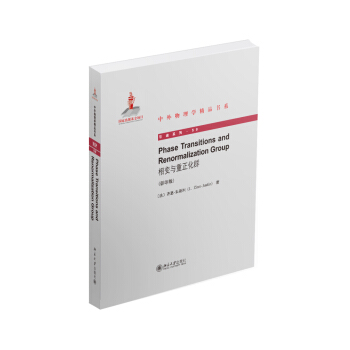

具体描述
编辑推荐
相变无疑是物理学中的最重要的现象之一。对于相变的研究贯穿整个物理学,甚至是人类文明史。而现代物理学中,与相变息息相关的一个方法就是重正化群方法,其概念和思想已经渗透于物理学的各个领域。《中外物理学精品书系:相变与重正化群(英文影印版)》的引进,能够供所有物理学领域的工作者作为参考。内容简介
《中外物理学精品书系:相变与重正化群(英文影印版)》详细讨论了相变与重正化群的关系。特别是相变中的连续极限、相干长度及标度律等等。本书适合所有物理学领域的科研工作者和研究生阅读。作者简介
(法)齐恩-朱斯坦,法国原子研究中心教授。目录
1 Quantum field theory and the renormalization group . . . . . . . . . 11.1 Quantum electrodynamics: A quantum field theory . . . . . . . . . 3
1.2 Quantum electrodynamics: The problem of infinities . . . . . . . . 4
1.3 Renormalization . . . . . . . . . . . . . . . . . . . . . . . . 7
1.4 Quantum field theory and the renormalization group . . . . . . . . 9
1.5 A triumph of QFT: The Standard Model . . . . . . . . . . . . . 10
1.6 Critical phenomena: Other infinities . . . . . . . . . . . . . . . 12
1.7 Kadanoff and Wilson’s renormalizationgroup . . . . . . . . . . . 14
1.8 Effective quantum field theories . . . . . . . . . . . . . . . . . 16
2 Gaussian expectation values. Steepest descent method . . . . . . . . 19
2.1 Generating functions . . . . . . . . . . . . . . . . . . . . . . 19
2.2 Gaussian expectation values.Wick’s theorem . . . . . . . . . . . 20
2.3 Perturbed Gaussian measure. Connected contributions . . . . . . . 24
2.4 Feynman diagrams. Connected contributions . . . . . . . . . . . . 25
2.5 Expectation values. Generating function. Cumulants . . . . . . . . 28
2.6 Steepest descent method . . . . . . . . . . . . . . . . . . . . 31
2.7 Steepest descent method: Several variables, generating functions . . . 37
Exercises . . . . . . . . . . . . . . . . . . . . . . . . . . . . . 40
3 Universality and the continuum limit . . . . . . . . . . . . . . . . . 45
3.1 Central limit theorem of probabilities . . . . . . . . . . . . . . . 45
3.2 Universality and fixed points of transformations . . . . . . . . . . 54
3.3 Random walk and Brownian motion . . . . . . . . . . . . . . . 59
3.4 Random walk: Additional remarks . . . . . . . . . . . . . . . . 71
3.5 Brownian motion and path integrals . . . . . . . . . . . . . . . 72
Exercises . . . . . . . . . . . . . . . . . . . . . . . . . . . . . 75
4 Classical statistical physics: One dimension . . . . . . . . . . . . . . 79
4.1 Nearest-neighbour interactions. Transfer matrix . . . . . . . . . . 80
4.2 Correlation functions . . . . . . . . . . . . . . . . . . . . . . 83
4.3 Thermodynamic limit . . . . . . . . . . . . . . . . . . . . . . 85
4.4 Connected functions and cluster properties . . . . . . . . . . . . 88
4.5 Statistical models: Simple examples . . . . . . . . . . . . . . . 90
4.6 The Gaussian model . . . . . . . . . . . . . . . . . . . . . . 924.7 Gaussian model: The continuumlimit . . . . . . . . . . . . . . . 98
4.8 More general models: The continuumlimit . . . . . . . . . . . 102
Exercises . . . . . . . . . . . . . . . . . . . . . . . . . . . . 104
5 Continuum limit and path integrals . . . . . . . . . . . . . . . . 111
5.1 Gaussian path integrals . . . . . . . . . . . . . . . . . . . . 111
5.2 Gaussian correlations.Wick’s theorem . . . . . . . . . . . . . 118
5.3 Perturbed Gaussian measure . . . . . . . . . . . . . . . . . . 118
5.4 Perturbative calculations: Examples . . . . . . . . . . . . . . 120
Exercises . . . . . . . . . . . . . . . . . . . . . . . . . . . . 124
6 Ferromagnetic systems. Correlation functions . . . . . . . . . . . 127
6.1 Ferromagnetic systems: Definition . . . . . . . . . . . . . . . 127
6.2 Correlation functions. Fourier representation . . . . . . . . . . . 133
6.3 Legendre transformation and vertex functions . . . . . . . . . . 137
6.4 Legendre transformation and steepest descent method . . . . . . . 142
6.5 Two- and four-point vertex functions . . . . . . . . . . . . . . 143
Exercises . . . . . . . . . . . . . . . . . . . . . . . . . . . . 145
7 Phase transitions: Generalities and examples . . . . . . . . . . . . 147
7.1 Infinite temperature or independent spins . . . . . . . . . . . . 150
7.2 Phase transitions in infinite dimension . . . . . . . . . . . . . 153
7.3 Universality in infinite space dimension . . . . . . . . . . . . . 158
7.4 Transformations, fixed points and universality . . . . . . . . . . 161
7.5 Finite-range interactions in finite dimension . . . . . . . . . . . 163
7.6 Ising model: Transfer matrix . . . . . . . . . . . . . . . . . . 166
7.7 Continuous symmetries and transfer matrix . . . . . . . . . . . 171
7.8 Continuous symmetries and Goldstone modes . . . . . . . . . . 173
Exercises . . . . . . . . . . . . . . . . . . . . . . . . . . . . 175
8 Quasi-Gaussian approximation: Universality, critical dimension . . . . 179
8.1 Short-range two-spin interactions . . . . . . . . . . . . . . . . 181
8.2 The Gaussian model: Two-point function . . . . . . . . . . . . 183
8.3 Gaussian model and random walk . . . . . . . . . . . . . . . 188
8.4 Gaussian model and field integral . . . . . . . . . . . . . . . . 190
8.5 Quasi-Gaussian approximation . . . . . . . . . . . . . . . . . 194
8.6 The two-point function: Universality . . . . . . . . . . . . . . 196
8.7 Quasi-Gaussian approximation and Landau’s theory . . . . . . . 199
8.8 Continuous symmetries and Goldstone modes . . . . . . . . . . 200
8.9 Corrections to the quasi-Gaussian approximation . . . . . . . . . 202
8.10 Mean-field approximation and corrections . . . . . . . . . . . 207
8.11 Tricritical points . . . . . . . . . . . . . . . . . . . . . . 211
Exercises . . . . . . . . . . . . . . . . . . . . . . . . . . . . 212
9 Renormalization group: General formulation . . . . . . . . . . . . 217
9.1 Statistical field theory. Landau’s Hamiltonian . . . . . . . . . . 218
9.2 Connected correlation functions. Vertex functions . . . . . . . . 220
9.3 Renormalization group: General idea . . . . . . . . . . . . . . 222
9.4 Hamiltonian flow: Fixed points, stability . . . . . . . . . . . . 226
9.5 The Gaussian fixed point . . . . . . . . . . . . . . . . . . . 2319.6 Eigen-perturbations: General analysis . . . . . . . . . . . . . . 234
9.7 A non-Gaussian fixed point: The ε-expansion . . . . . . . . . . 237
9.8 Eigenvalues and dimensions of local polynomials . . . . . . . . . 241
10 Perturbative renormalization group: Explicit calculations . . . . . . 243
10.1 Critical Hamiltonian and perturbative expansion . . . . . . . . 243
10.2 Feynman diagrams at one-loop order . . . . . . . . . . . . . . 246
10.3 Fixed point and critical behaviour . . . . . . . . . . . . . . . 248
10.4 Critical domain . . . . . . . . . . . . . . . . . . . . . . . 254
10.5 Models with O(N) orthogonal symmetry . . . . . . . . . . . . 258
10.6 Renormalization group near dimension 4 . . . . . . . . . . . . 259
10.7 Universal quantities: Numerical results . . . . . . . . . . . . . 262
11 Renormalization group: N-component fields . . . . . . . . . . . . 267
11.1 Renormalization group: General remarks . . . . . . . . . . . . 268
11.2 Gradient flow . . . . . . . . . . . . . . . . . . . . . . . . 269
11.3 Model with cubic anisotropy . . . . . . . . . . . . . . . . . 272
11.4 Explicit general expressions: RG analysis . . . . . . . . . . . . 276
11.5 Exercise: General model with two parameters . . . . . . . . . . 281
Exercises . . . . . . . . . . . . . . . . . . . . . . . . . . . . 284
12 Statistical field theory: Perturbative expansion . . . . . . . . . . 285
12.1 Generating functionals . . . . . . . . . . . . . . . . . . . . 285
12.2 Gaussian field theory.Wick’s theorem . . . . . . . . . . . . . 287
12.3 Perturbative expansion . . . . . . . . . . . . . . . . . . . . 289
12.4 Loop expansion . . . . . . . . . . . . . . . . . . . . . . . 296
12.5 Dimensional continuation and regularization . . . . . . . . . . 299
Exercises . . . . . . . . . . . . . . . . . . . . . . . . . . . . 306
13 The σ4 field theory near dimension 4 . . . . . . . . . . . . . . . 307
13.1 Effective Hamiltonian. Renormalization . . . . . . . . . . . . 308
13.2 Renormalization group equations . . . . . . . . . . . . . . . 313
13.3 Solution of RGE: The ε-expansion . . . . . . . . . . . . . . . 316
13.4 Effective and renormalized interactions . . . . . . . . . . . . . 323
13.5 The critical domain above Tc . . . . . . . . . . . . . . . . . 324
14 The O(N) symmetric (φ2)2 field theory in the large N limit . . . . 329
14.1 Algebraic preliminaries . . . . . . . . . . . . . . . . . . . . 330
14.2 Integration over the field φ: The determinant . . . . . . . . . . 331
14.3 The limit N →∞: The critical domain . . . . . . . . . . . . 335
14.4 The (φ2)2 field theory for N →∞ . . . . . . . . . . . . . . . 337
14.5 Singular part of the free energy and equation of state . . . . . . 340
14.6 The λλ and φ2φ2 two-point functions . . . . . . . . . . . . 343
14.7 Renormalization group and corrections to scaling . . . . . . . . 345
14.8 The 1/N expansion . . . . . . . . . . . . . . . . . . . . . 348
14.9 The exponent η at order 1/N . . . . . . . . . . . . . . . . . 350
14.10 The non-linear σ-model . . . . . . . . . . . . . . . . . . . 351
15 The non-linear σ-model . . . . . . . . . . . . . . . . . . . . . 353
15.1 The non-linear σ-model on the lattice . . . . . . . . . . . . . 353
15.2 Low-temperature expansion . . . . . . . . . . . . . . . . . . 35515.3 Formal continuumlimit . . . . . . . . . . . . . . . . . . . 360
15.4 Regularization . . . . . . . . . . . . . . . . . . . . . . . 361
15.5 Zero-momentum or IR divergences . . . . . . . . . . . . . . . 362
15.6 Renormalization group . . . . . . . . . . . . . . . . . . . . 363
15.7 Solution of the RGE. Fixed points . . . . . . . . . . . . . . . 368
15.8 Correlation functions: Scaling form . . . . . . . . . . . . . . 370
15.9 The critical domain: Critical exponents . . . . . . . . . . . . 372
15.10 Dimension 2 . . . . . . . . . . . . . . . . . . . . . . . . 373
15.11 The (φ2)2 field theory at low temperature . . . . . . . . . . . 377
16 Functional renormalization group . . . . . . . . . . . . . . . . . 381
16.1 Partial field integration and effective Hamiltonian . . . . . . . . 381
16.2 High-momentum mode integration andRGE . . . . . . . . . . 390
16.3 Perturbative solution: φ4 theory . . . . . . . . . . . . . . . . 396
16.4 RGE: Standard form . . . . . . . . . . . . . . . . . . . . . 399
16.5 Dimension 4 . . . . . . . . . . . . . . . . . . . . . . . . 402
16.6 Fixed point: ε-expansion . . . . . . . . . . . . . . . . . . . 409
16.7 Local stability of the fixed point . . . . . . . . . . . . . . . . 411
Appendix . . . . . . . . . . . . . . . . . . . . . . . . . . . . 417
A1 Technical results . . . . . . . . . . . . . . . . . . . . . . . 417
A2 Fourier transformation: Decay and regularity . . . . . . . . . . 421
A3 Phase transitions: General remarks . . . . . . . . . . . . . . . 426
A4 1/N expansion: Calculations . . . . . . . . . . . . . . . . . . 431
A5 Functional renormalization group: Complements . . . . . . . . . 433
Bibliography . . . . . . . . . . . . . . . . . . . . . . . . . . . 441
Index . . . . . . . . . . . . . . . . . . . . . . . . . . . . . . . 447
前言/序言
用户评价
作为一名业余的物理爱好者,我对《中外物理学精品书系:相变与重正化群(英文影印版)》的关注,更多地源于它所代表的“前沿”与“经典”的结合。相变现象在自然界中无处不在,从宇宙初期的相变,到凝聚态物理中的超导、超流,再到生物化学中的蛋白质折叠,都涉及到物质状态的根本性改变。而重正化群,又是理解这些复杂系统行为的关键工具。虽然我可能无法完全掌握书中的所有数学细节,但我依然希望通过阅读,能够对这些概念有一个更直观、更深刻的理解。我特别想知道,书中会如何处理“临界指数”的概念,以及重正化群如何预测这些指数的普适性,使得不同系统的临界行为可以用同一组指数来描述。这种跨越不同物理体系的普适性,一直是令我着迷的物理学奇迹之一。我设想,这本书可能会包含一些生动的类比和图示,帮助我这样的非专业读者理解抽象的概念。例如,可能会用“放大镜”或者“聚焦”来比喻重正化群如何揭示长尺度行为,或者用“滤波器”来比喻它如何去除高频噪声。
评分我一直对物理学中的“对称性”和“自发破缺”这两个概念深感兴趣,而《中外物理学精品书系:相变与重正化群(英文影印版)》的书名恰好触及了这些核心议题。相变,在我看来,往往伴随着对称性的改变,比如水结冰时,流体的各向同性就被打破,形成晶体的有序结构。而重正化群,作为一种处理多体系统复杂性的强大理论框架,必然能够深刻地揭示这种对称性破缺的微观机制以及其在不同尺度上的表现。我非常好奇书中会如何运用重正化群的语言来描述这些相变过程。是会从海森堡模型、伊辛模型等经典的统计物理模型入手,一步步推导出重正化群方程?还是会介绍更现代的、例如基于路径积分或场论的方法?我预感,书中定然会包含一些精妙的数学推导,帮助读者理解重正化群如何通过“抹去”高能(短尺度)自由度来揭示低能(长尺度)的有效理论,从而简化复杂的物理问题。这种“化繁为简”的思想,正是科学的魅力所在。我期待书中能够清晰地解释重正化群的“固定点”概念,以及为什么这些固定点代表了系统的普适行为。
评分《中外物理学精品书系:相变与重正化群(英文影印版)》的出现,让我看到了深入理解统计物理学核心内容的机会。相变,作为统计物理学的核心研究对象之一,其背后蕴含着极其深刻的物理规律。我之前在学习中遇到过一些关于临界现象的描述,对“涨落”、“关联长度”等概念有所耳闻,但始终未能建立起一个系统性的认知。重正化群,作为一种处理这些复杂多体系统问题的强大数学工具,在我看来,是打开这些难题的金钥匙。我特别希望能在这本书中找到对重正化群概念的清晰解释,例如它如何处理系统在不同尺度下的自由度,以及如何通过迭代过程找到系统的“固定点”。我设想,书中可能会包含一些关于二维伊辛模型、XY模型等典型模型的分析,演示如何应用重正化群来计算临界温度、临界指数等物理量。我也好奇,书中是否会提及重正化群在量子场论中的应用,因为我知道重正化思想在粒子物理学的标准模型中也扮演着关键角色。这本书的英文影印版,对我来说,意味着能接触到国际上最权威的学术成果,是进一步拓宽我物理学视野的宝贵途径。
评分这本书名《中外物理学精品书系:相变与重正化群(英文影印版)》吸引我的一个重要原因是“精品书系”的冠名,这暗示了其内容的高水准和学术价值。虽然我对“重正化群”这个概念的具体数学细节还不太熟悉,但我对“相变”的理解,已经让我对这本书充满了期待。我曾阅读过一些科普性质的读物,对液晶的相变、铁磁体的相变等有初步的了解,知道这些变化往往伴随着某些物理量的突变。我猜测,书中会深入探讨相变的“分类”,例如是第一类相变还是第二类相变,以及它们各自的特点和判据。而重正化群,作为一个能够处理临界现象的强大理论工具,想必在书中会扮演至关重要的角色。我非常好奇,重正化群是如何将微观粒子之间的复杂相互作用,转化成能够描述宏观相变行为的普适规律的。书中是否会包含对相变理论发展历史的回顾,以及对居里、朗道、威尔逊等重要物理学家的贡献的介绍?这些历史的维度,往往能帮助我们更好地理解一个理论是如何逐步发展完善起来的。
评分这本《中外物理学精品书系:相变与重正化群(英文影印版)》虽然我还没有细致地研读,但从它在书架上的陈列和封面的设计,就能感受到一种沉甸甸的学术气息。书名本身就如同一个召唤,将我带入了一个充满抽象美学和深刻洞察的物理学领域。相变,这个词汇本身就充满了引人入胜的魅力,无论是生活中我们熟悉的从固态到液态、从液态到气态的变化,还是更深奥的物理学中的各种奇异相态,都揭示了物质在特定条件下发生的翻天覆地的转变。而重正化群,这更是理论物理中一个极其强大的工具,它能够帮助我们理解不同尺度下的物理现象是如何关联的,并在微观的混乱中提炼出宏观的规律。我尤其期待书中能够详细阐述重正化群在描述相变过程中的应用,例如临界现象的普适性,以及如何通过重正化群的视角来理解一些看似截然不同的物理系统却表现出相似的临界行为。这本书的英文影印版,也意味着它保留了原汁原味的学术风格,对于希望深入理解该领域前沿研究的学者来说,无疑是一份珍贵的资源。我设想,书中可能会包含对基本概念的清晰梳理,对关键理论模型的详尽推导,以及对一些经典实验结果的分析,这些都是构建坚实理论基础不可或缺的部分。
评分书很好,送货快,专业用书老师很喜欢
评分吼吼吼吼吼吼吼吼啊(十个字)
评分好用
评分来都在京东买东西,质量好,送货快,信誉有保证!!!
评分中外物理学精品书系:相变与重正化群(英文影印版)》详细讨论了相变与重正化群的关系。特别是相变中的连续极限、相干长度及标度律等等。本书适合所有物理学领域的科研工作者和研究生阅读。
评分内容和品相都很好,内容和品相都很好
评分还行。。。。。。。。
评分相变与重正化群(英文影印版)
评分内容和品相都很好,内容和品相都很好
相关图书
本站所有内容均为互联网搜索引擎提供的公开搜索信息,本站不存储任何数据与内容,任何内容与数据均与本站无关,如有需要请联系相关搜索引擎包括但不限于百度,google,bing,sogou 等
© 2025 book.tinynews.org All Rights Reserved. 静思书屋 版权所有

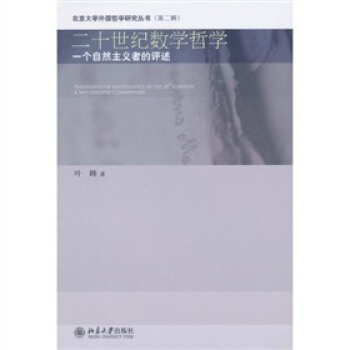
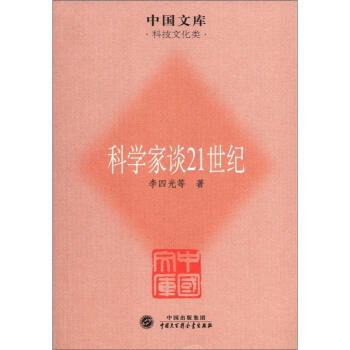
![李群论(英文版) [Theory of Lie Groups] pdf epub mobi 电子书 下载](https://pic.tinynews.org/11142975/rBEHZVDH9-YIAAAAAAb2zyD06vgAADO5gJXIjAABvbn900.jpg)

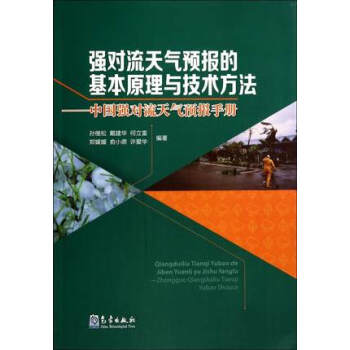
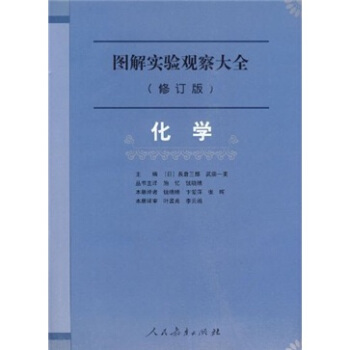
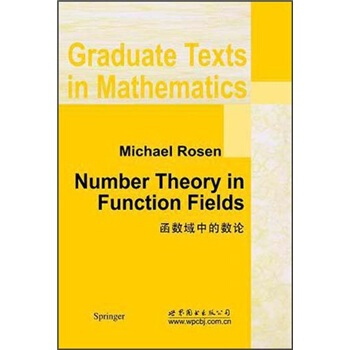

![物理学经典教材:统计力学(第2版) [Statistical Mechanics Made Simple 2nd Edition] pdf epub mobi 电子书 下载](https://pic.tinynews.org/11004216/rBEIC0_NW0EIAAAAAACQunZ2JpEAAAYvAJ-Zb8AAJDS740.jpg)
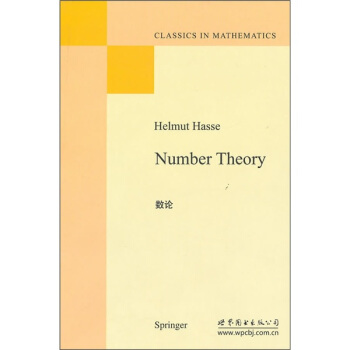
![Springer手册精选系列·晶体生长手册(第1册):晶体生长及缺陷形成概论(影印版) [Springer Handbook Crystal Growth] pdf epub mobi 电子书 下载](https://pic.tinynews.org/11179560/rBEQWVE0c8cIAAAAAAcyKDz8ZQwAABcEgFCW7YABzJA210.jpg)
![流形上的层(英文版) [Sheaves on Manifolds] pdf epub mobi 电子书 下载](https://pic.tinynews.org/11419299/rBEhVVMfqukIAAAAAAIQYlzpMT8AAKAVgE8hbIAAhB6608.jpg)
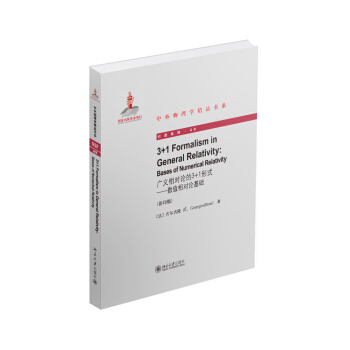

![群与对称 [Groups and Symmetry] pdf epub mobi 电子书 下载](https://pic.tinynews.org/10888929/d6dbbe8e-85ef-4413-ab2a-c569c49fb4fa.jpg)

![经典数学丛书(影印版):模形式与费马大定理 [Modular Forms and Fermat's Last Theorem] pdf epub mobi 电子书 下载](https://pic.tinynews.org/11551548/5438761cNc3221f32.jpg)
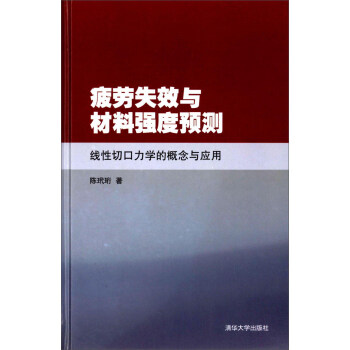
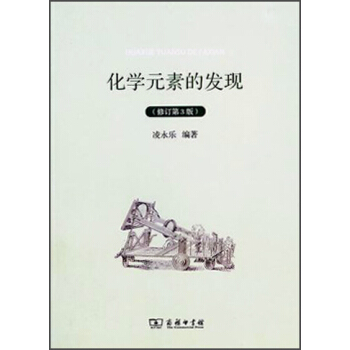
![中外物理学精品书系:超冷量子气体 [Physics of Ultracold Quantum Gases] pdf epub mobi 电子书 下载](https://pic.tinynews.org/11631708/54c622e0N72e4b257.jpg)